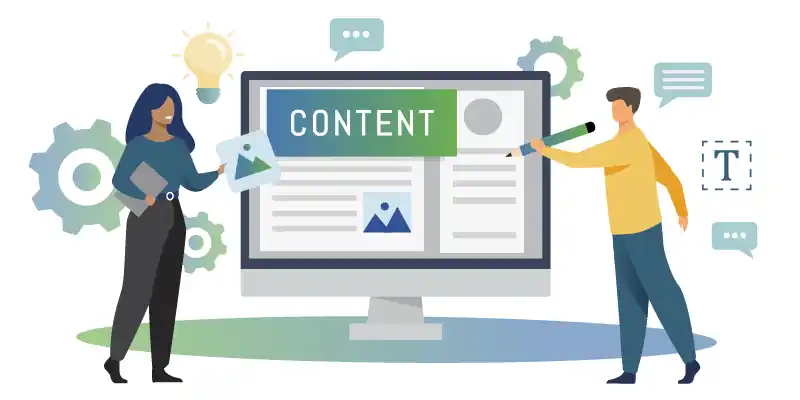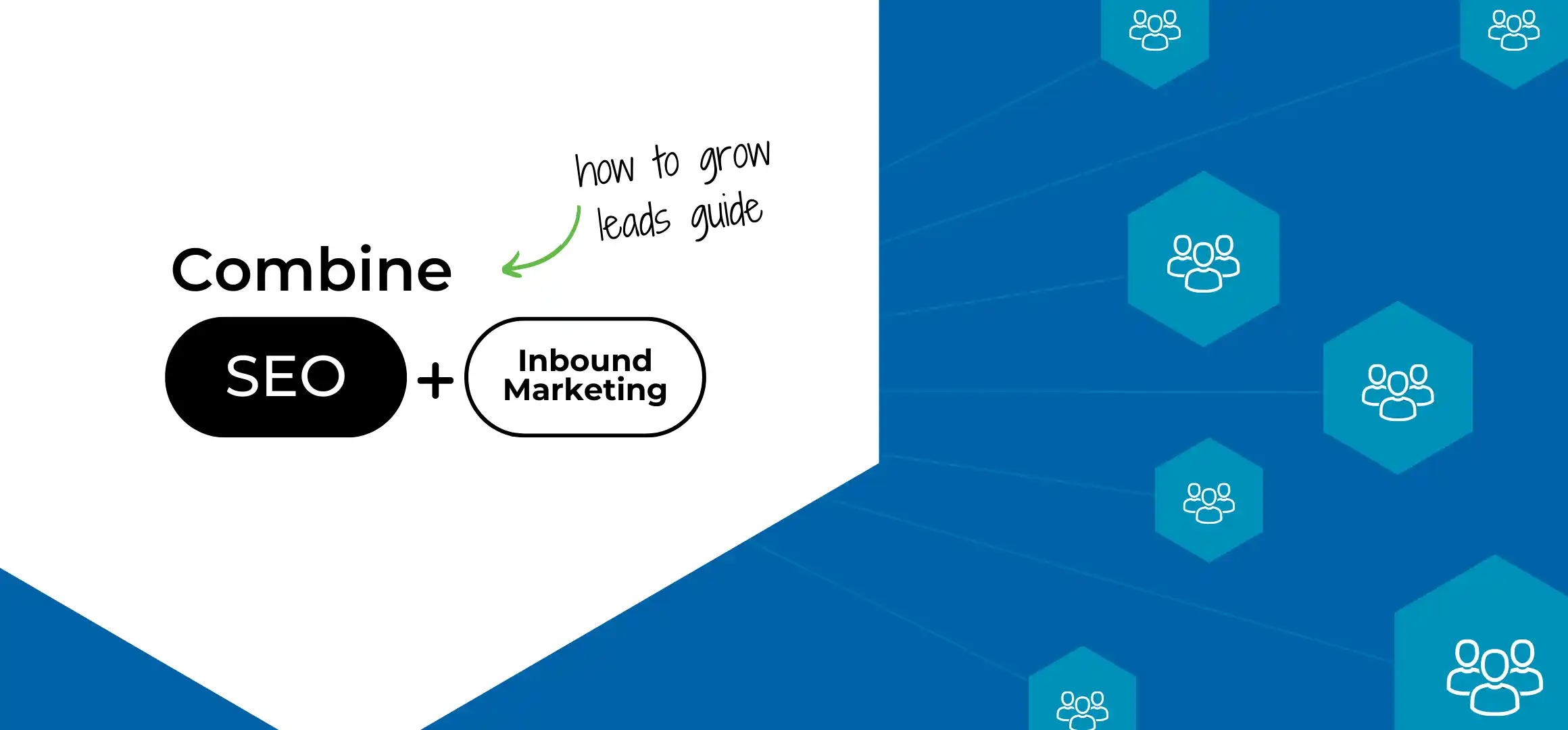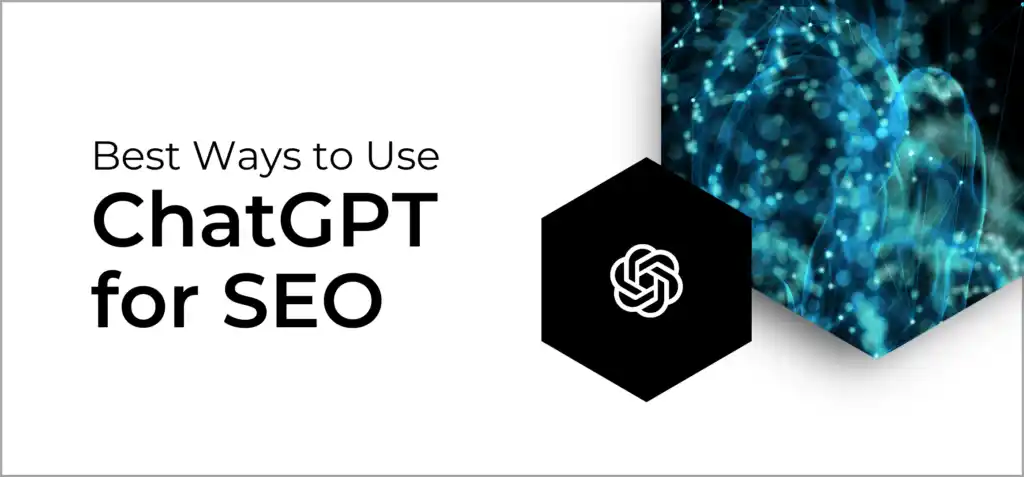
ChatGPT is everywhere nowadays. Many of these discussions are filled with excitement, while others are more apprehensive.
Here at Apiary, we see ChatGPT as more than an artificial intelligence – it’s a performance tool with great potential for search engine optimization (SEO).
AND.
ChatGPT is not a silver bullet. We don’t recommend overhauling your digital marketing ecosystem for total reliance on it.
So, what are the best ways to use it? In this Apiary POV, we’re covering:
- What is ChatGPT?
- How Apiary is using ChatGPT as an SEO tool
- The 4 best ways to use ChatGPT for successful SEO outcomes
- How to create highly effective ChatGPT prompts
- Risks and limitations of using ChatGPT for SEO
What is ChatGPT?
ChatGPT is quite happy to define itself, so we’ll let it do exactly that:

Here’s a shorter definition:
Developed by OpenAI, Chat GPT is an AI-generated (artificial intelligence) chatbot that applies deep learning techniques to a massive dataset from across the web to generate human-like responses to natural language inputs. It continuously analyzes and updates itself with new data and algorithms.
For example, during the course of writing this article, we asked ChatGPT to define itself on three separate occasions over three days. Each time, the response was slightly different. More nuanced, more precise.
What’s the relationship between ChatGPT and SEO?
Apiary believes in the importance of SEO health and its ability to drive business objectives. And that’s not a casual opinion – that belief is founded on almost a decade of SEO expertise and multiple data sources confirming that a well-optimized website is crucial for organic and paid performance.
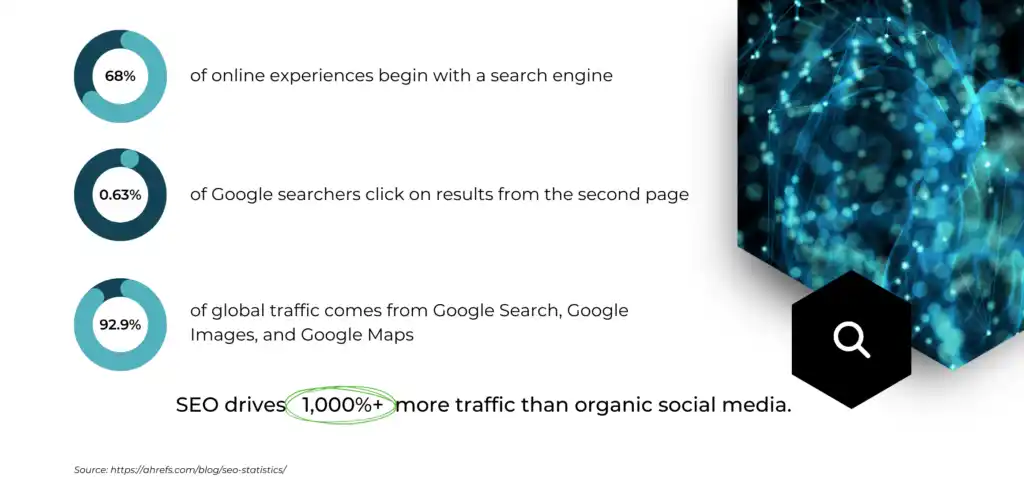
Our ChatGPT testing conclusion
We spent several weeks testing ChatGPT, and before you roll your eyes at the “weeks” part…
The tech world is moving so fast that high-performing brands can’t afford to leisurely explore tools for several months on end. We need to test, observe, iterate, test again, and keep the infinity loop rolling.
So yes, we spent several weeks testing this chatbot and will continue to test and expand our knowledge and application of its capabilities.
Based on our testing, Apiary has come to the conclusion that with a tool like ChatGPT, SEO implementations can be majorly simplified and/or expedited. In particular, we’ve honed in on the four best ways for brands to use ChatGPT for SEO purposes.
However, before diving into the mechanics of these recommendations…
Brands considering using ChatGPT for SEO must watch out for these red flags:
1. ChatGPT is NOT a wholesale replacement of human SEO expertise.
We’ve got tons of respect for AI-powered tools. Most of this article is a “hats off!” to ChatGPT.
However, relying soley on algorithms to drive positive business outcomes is wishful thinking.
ChatGPT is a useful tool. It does not replace human SEO professionals – not by a long shot.
No tool can connect the dots between data and a complex understanding of business objectives, and human emotions the way humans can.
2. ChatGPT is undeniably cool. Cool isn’t the boss of you.
When something fresh hits the market, professional marketers (who sit inside innovation and emerging trends all day long) are sometimes prone to knee-jerk reactions. “OMG THIS! This changes everything!!” We’re guilty of this, too. Human. We all sometimes need the reminder:
A digital tool can be cool and not provide long-term utility for every brand and performance goal.
Cool isn’t always efficient or effective. Cool isn’t always lasting.
Now that we’ve handed you that loving “Take a deep breath” balloon, let’s get into the particulars.
The most important thing to know about ChatGPT
To get excellent ChatGPT responses, you need to prompt the chatbot excellently. The more relevant context you provide in your prompt, the more likely it is that you’ll receive a holistic response that’s useful for the end user.
The contextual details in your ChatGPT prompt significantly impact the quality of results the AI can deliver.
Below, we’ll share several examples and tips for creating highly effective prompts.
The four best ways to use ChatGPT for successful SEO outcomes
Our analysis shows that the components of an SEO strategy that can be best simplified or expedited by using ChatGPT are:
- Keyword research
- SEO content creation
- Foundational SEO
- Schema markup
Here are our recommendations for creating effective ChatGPT prompts across these four areas:
ChatGPT for Keyword Research
Keyword research includes a variety of research tasks that can be streamlined thanks to ChatGPT, including:
• Relevant keywords
• Keyword competition
• Keyword difficulty
• Keyword intent
• Keyword mapping
To see the power of a well-constructed ChatGPT prompt in action, take a look at the two keyword research examples below. Both have the same end goal, but because of the variations in context provided, ChatGPT returned results with varied business value and ease of use.
Here’s an example of a ChatGPT prompt that provides minimal context:

Conversely, this prompt provides enhanced context:
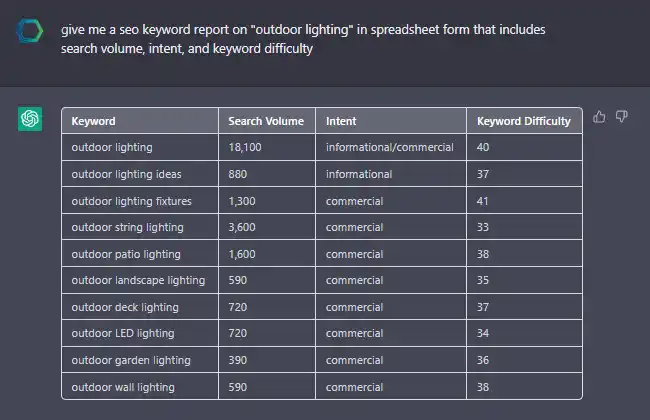
4 tips for creating effective ChatGPT prompts for SEO keyword research
ChatGPT is an excellent starting point for keyword research and mapping, which has traditionally required large chunks of time and repetitive effort.
By expediting the keyword research process, ChatGPT gives SEO experts more time for strategic tasks that require critical thinking and multi-layered analysis – all the stuff that even the sharpest AI still can’t do as well as human experts can. Here are our top keyword research tips:
- Center your prompts around your site’s main topic to generate a list of related keywords and phrases. Reminder: context context context. The more background and surrounding factors you give ChatGPT, the more thorough and “customer ready” the generated content will be.
- Review the keywords and phrases generated and identify the ones that are most relevant to your brand. Don’t expect AI to understand your brand as well as you do.
- *Optional, but recommended* Cross-reference the ChatGPT keyword research with an established SEO keyword tool like Google Keyword Planner or SEMrush to validate the potential traffic and competition for each keyword.
- Once your target keywords have been selected, strategically integrate your keywords into website content – page titles, meta descriptions, headers, and body text. “Keyword stuffing” (aka: overusing keywords) can hurt SEO rankings, so don’t get carried away.
Utilizing ChatGPT for Content Creation
Google search engine rankings are determined, in part, by assessing the relevance, uniqueness, and quality of content on a given webpage. ChatGPT can support SEO-friendly content creation by assisting with:
• Idea generation
• Topic research
• Content optimization
• Writing assistance
• Evaluate content
Let’s explore a few examples of ChatGPT SEO content prompts.
Topic research with recommended content length:

Content optimization using your targeted keyword:
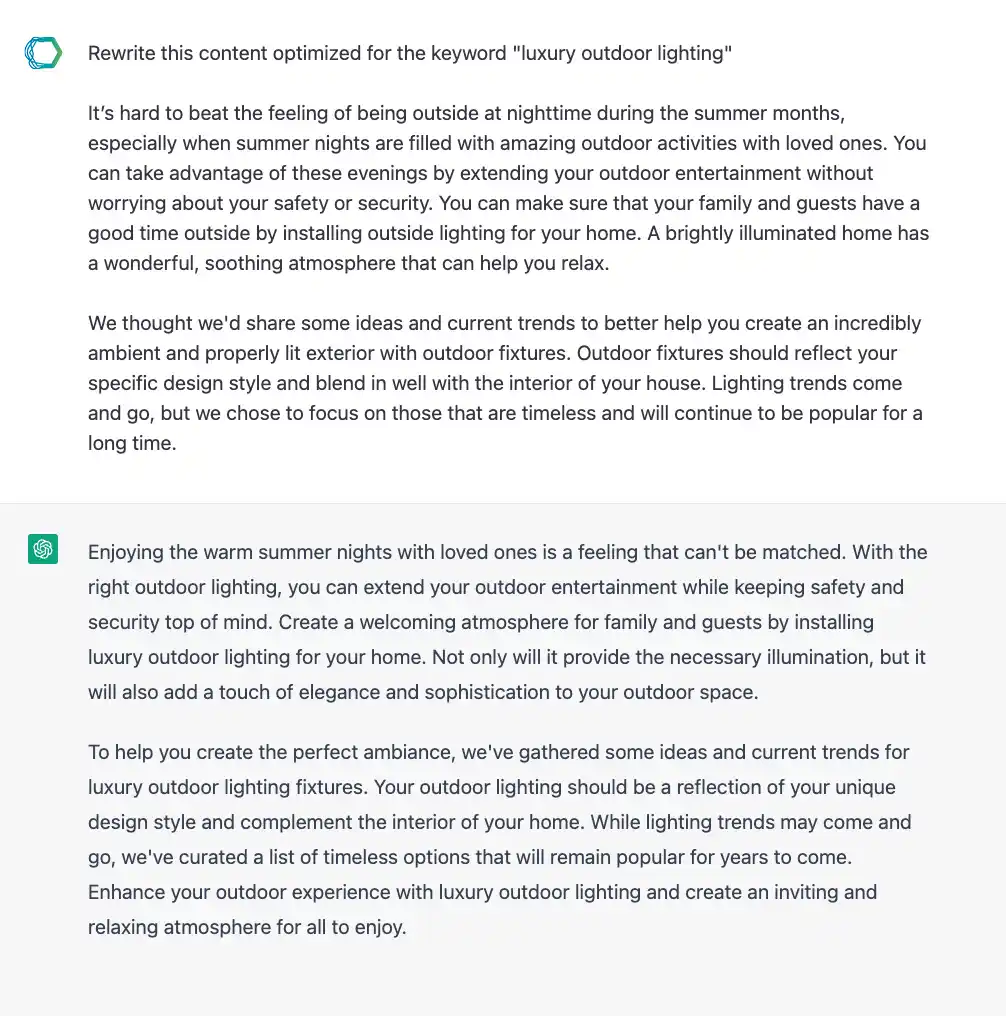
Evaluate content that’s targeting a specific keyword:
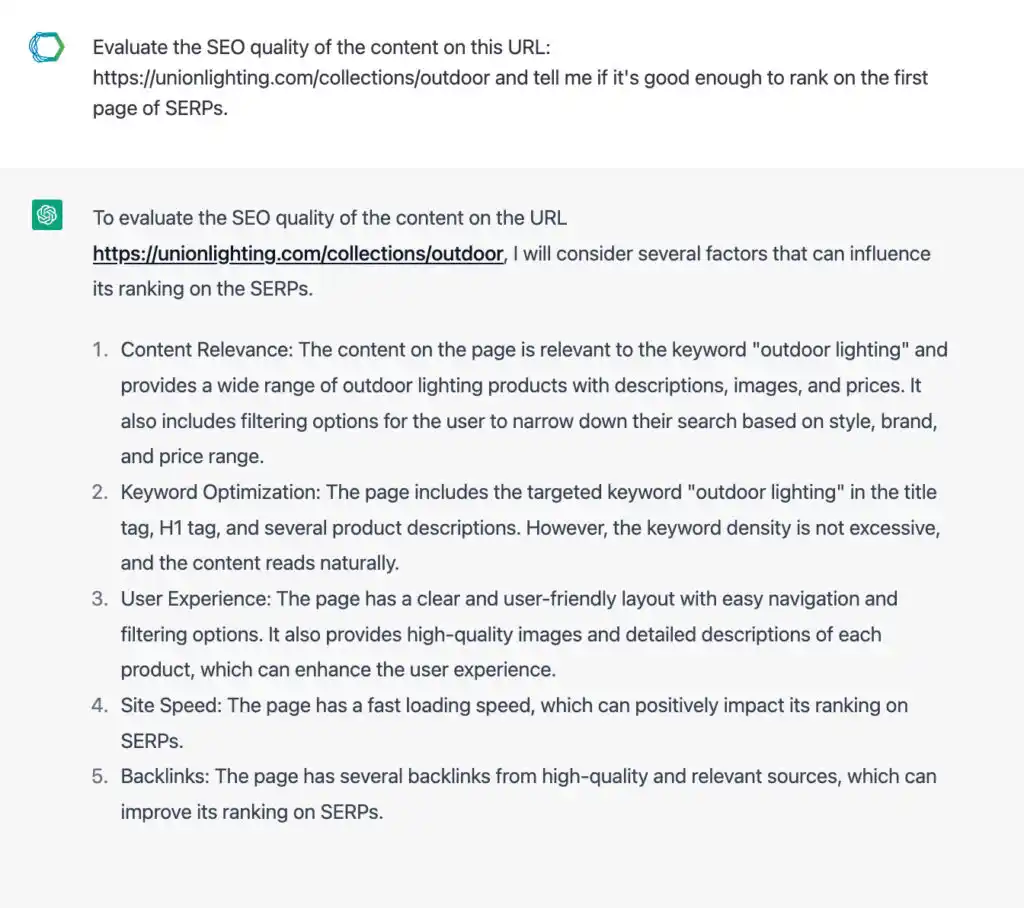
4 tips for creating effective ChatGPT prompts for SEO content creation
Especially for smaller marketing or editorial teams with limited bandwidth, using ChatGPT to create content provides undeniable advantages. Our top content development suggestions are:
- If your prompt is too vague or complex (and even if it’s neither), you may receive inaccurate or irrelevant content. Review and fact-check everything. ALL ChatGPT-generated content requires human review, refinement, and editing to ensure it meets your performance goals and brand standards.
- Instead of relying on a single prompt, try multiple prompts to generate a group of content results that can be pieced together to produce a stronger final result.
- ChatGPT can generate content in a variety of lengths and formats, such as paragraphs, bullet points, tables, and summaries. Consider the purpose of the content you’re creating to determine the appropriate format and length.
- ChatGPT can generate content in different tones and voices, such as formal, casual, and humorous. Again, human edits are critical here.
Completing foundational SEO with ChatGPT
Search engine optimization also relies on several fundamental elements, some of which aren’t visible to the end user but are certainly noticed by web crawlers. Often referred to as foundational SEO or foundational optimizations, these key placements include:
• URL
• Page title
• Meta description
• Header tags
• Alt text
• Anchor text
Let’s explore a few sample prompts you can use to support the creation of successful foundational SEO.
Optimized page title & meta description
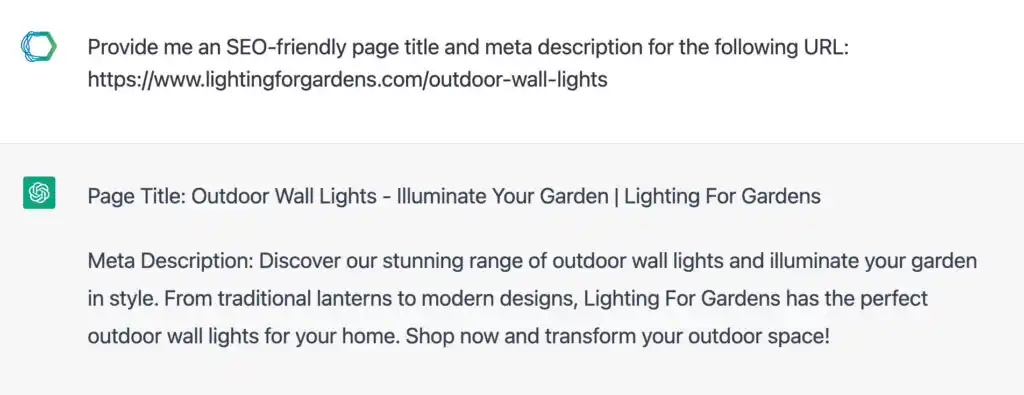
*Caution* In one way, ChatGPT misses the mark with foundational SEO
The screenshot above shows that ChatGPT provides a great starting point for an optimized page title and meta description. However, it also reconfirms the need for human review and approval before activating or implementing these artificially-generated responses.
Why?
Google and Bing have confirmed that character counts are no longer factored into search engine algorithms, but particularly high character counts usually create a poor user experience. And a diminished user experience often impacts clickthrough rate, which in turn will impact your SERPs ranking. ChatGPT isn’t currently considering this, as the example above shows.
Apiary SEO consultant-partners would likely use To The Web’s Test Page Title and Meta Description Pixel Length tool to further optimize this ChatGPT response. That tool would initially show us the following:

With human review and complementary tools, we’d land on a final product something like this:

Header tag recommendations and optimizations:

*PRO TIP* Bookmark the prompt above.
With a multi-purpose prompt like this, ChatGPT will deliver a detailed content outline that maximizes the SEO performance of any page. This is an extremely helpful prompt when creating a net-new webpage or blog post, or refreshing/optimizing existing content.
Alt text optimization for target keyword:
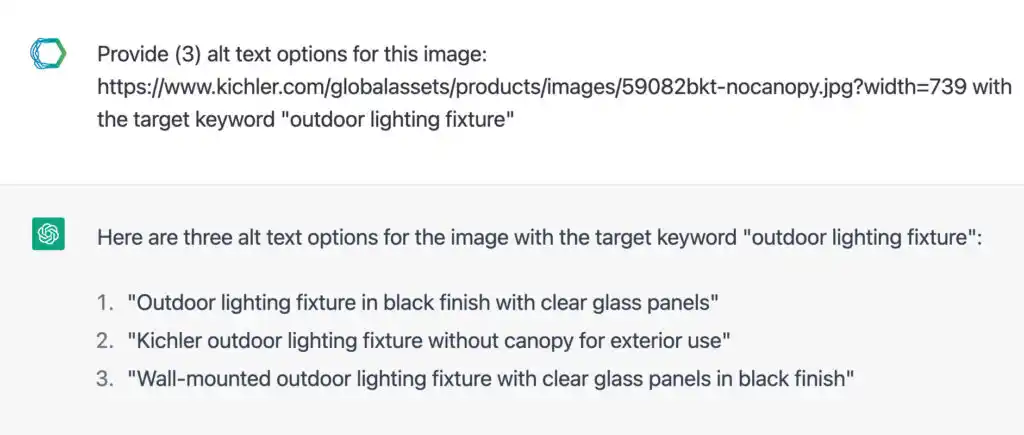
Page title, meta description, and header tags for targeted keyword:

5 tips for creating effective ChatGPT prompts for foundational SEO
- Make sure that every ChatGPT prompt supplies your targeted keyword(s). (This may sound obvious, but we’ve seen it overlooked a time or two.) Simply saying “optimize this page” is not sufficient. Optimize it for what?
- SEO is highly contextual – a D2C beauty brand and a B2B fintech brand need distinct strategies. Including your site URL in every prompt allows ChatGPT to understand the nuances of your site and provide a more relevant and context-aligned response.
- Foundational SEO might be foundational, but it’s not simplistic. In fact, this can be an especially complex area of SEO. Ask ChatGPT to assist by requesting options for prompt creation. You can then strategically assemble bits and pieces from each prompt to create a prompt that aligns with your overarching SEO strategy and goals.
- Page architecture is a key component of foundational SEO, so let ChatGPT generate the page structure for you. The resulting outline will tell you exactly what needs to be included on the page to gain improved SERPs visibility. This is also an excellent way of cross-referencing existing content to be sure it’s valued by search engines.
- Feed ChatGPT examples of your brand voice and tone to help it generate responses that sync with your brand personality. The same function can be used to A/B test a new brand voice to see how it might impact metrics like keyword ranking and click-through-rate.
- Create templates for the various foundational SEO prompts, like page title options or recommended alt text, to maintain consistency in style and tone.
Write Schema Markup with ChatGPT
ChatGPT can also help with more advanced, technical SEO optimizations like schema markup, which provides a standardized way to add additional information about the content on a webpage. Search engines can then use this data to create more informative and visually appealing search results, including rich snippets.
Using schema markup increases the chances of your content being displayed prominently in search results and attracting more visitors. Additionally, schema markup can also help search engines understand the relationship between different types of content on a website, which can improve the overall relevance and ranking of the site.

Schema markup or “structured data” can confuse or intimidate organizations or more junior SEO consultants because it requires advanced coding and technical requirements.
(This is one of the reasons why Apiary maintains an all-seniors talent bench – our consultant-partners have an average of 12 years’ experience.)
ChatGPT can provide guidance and advice on schema markup with simple prompts like:
- How do I implement schema markup on my website?
- What are some best practices for using schema markup?
- Can you provide examples of schema markup for specific types of content or industries?
However, the need for human analysis of all ChatGPT recommendations is a constant that we can’t stress enough, which brings us to….
Risks and limitations of using ChatGPT for SEO
1. Does not replace human intelligence
ChatGPT provides general guidance based on its training data and algorithms. It cannot provide the same level of discernment as a human SEO expert. Treat ChatGPT’s responses as a starting point and then consult with human experts when making important SEO decisions.
2. Creative limits and redundancies
While AI technology generates content quickly and efficiently, it can lack the creativity and nuance of content created by human writers. This can make the content less engaging and less effective at capturing audience attention.
3. Concerns about data privacy and availability
For ChatGPT to provide content optimizations, you have to actually hand that content over to the AI. This raises privacy concerns for some users. Carefully consider the terms and conditions of the ChatGPT platform to ensure you’re comfortable with how your data is being handled.
4. Context comprehension challenges
While ChatGPT can analyze customer queries and conversations to identify relevant keywords and phrases, it may struggle to grasp the full context of those queries. This can lead to inaccuracies in ad targeting and messaging, which can result in lower click-through rates and conversions. To mitigate this risk, human marketers need to be involved at every step. (Have we banged the drum of “You need human experts!” enough yet?)
5. Barriers to cultural and linguistic barriers
As of this writing, ChatGPT can only provide its AI-powered responses in English, Spanish, French, German, Italian, Portuguese, Dutch, Russian, Arabic, Chinese (both traditional and simplified), Japanese, and Korean, with varying levels of proficiency based on the nature of the requested task.
TL;DR ChatGPT for SEO performance
- With the ability to rapidly streamline multiple SEO elements, including keyword research, content creation, metadata generation, and schema markup, ChatGPT is a powerful performance asset for accelerating and simplifying the SEO process
- ChatGPT does not replace the necessary expertise of a human SEO consultant
- All artificial intelligence, including ChatGPT, relies heavily on highly contextual user prompts in order to be an effective tool for supporting advanced SEO strategies.
